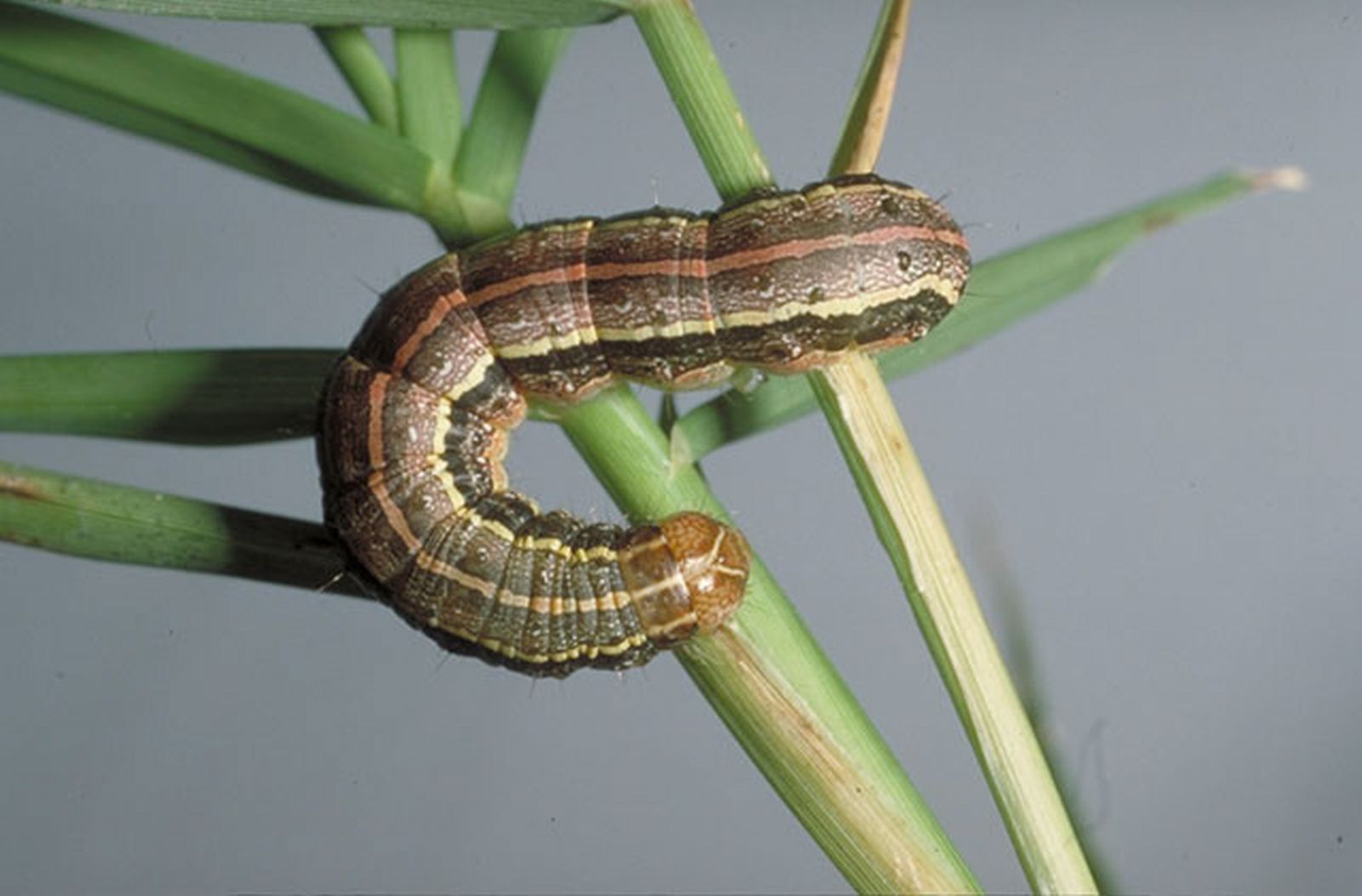Recent Rainfall Events Cause Armyworms to Thrive by Dr. Mario A. Villarino, County Extension Agent for Agriculture and Natural Resources

[adning id=”33097″]

Recent rainfall events have been a major problem this summer. As a result of this rainfall, fall armyworms (Spodoptera frugiperda) are thriving across the northern, central and eastern portions of Texas. Below is some information on the biology of the pest, how to scout for them, and control options to mitigate damage.
[adning id=”33207″]
Fall armyworm caterpillars are primarily identifiable by two features. The head will have apparent white markings that form an upside down “Y” pattern. The second feature is that the last couple segments of the caterpillar will have black bumps that form a square or rectangle. There are multiple methods that are available to scout for FAW caterpillars. The more common method is to get on your hands and knees and closely inspect the grass. During hot days, check the lower parts of the plant or soil surface where they may be hiding from the harsh temperatures. Sweep nets are a very good and easy to use tool for sampling for FAW in tall grass. Another method is to run your hands across a 1-2 square foot area and knock the caterpillars to the soil surface. Then, simply inspect the soil for dislodged caterpillars.
Regardless of the scouting method, take note of the size of the caterpillars. Smaller caterpillars (<1/2 inch) are less damaging. Larger caterpillar (>1/2 inch) should be treated soon to prevent greater damage. If using a sweep net, then treat at 2 or more caterpillars ½ inch or larger per sweep. If making visual inspections, then treat if you have 2 or more FAW caterpillars per square foot. If you are picking up larger numbers of small caterpillars, then treatment is also justified. Most of the time fields are either well below or well above threshold.
If the grass is being used for hay and is near harvest, then harvest early to prevent extra feeding damage. However, be aware that the caterpillars may consume the cut hay, so this is not always a wise option.
Insecticide applications should be made early in the morning or late in the evening if possible, to ensure caterpillars come into contact with insecticide. During hotter parts of the day, caterpillars may be out of the canopy and avoid maximum insecticide exposure.
There are many insecticides that can be used to control FAW caterpillars. Pyrethroids are relatively cheap and readily available. These insecticides take roughly three days to achieve maximum effectiveness against small and large caterpillars. Pyrethroid insecticides tend to have a short residual period and can be washed off by rains. This lack of rain fast protection can be a problem with the recent weather and possible overlapping generations of fall armyworm caterpillars. Addition of a product like Dimilin (or generic products with diflubenzuron) can increase the residual control period to 10-12 days, eliminating caterpillars that emerge in that timeframe. Neither pyrethroids nor Dimilin will continue providing control if rain occurs though. Another fairly inexpensive option in Intrepid (or generic products with methoxyfenozide). This product will provide residual control for about 7 days, but it must be eaten to kill the caterpillar and is not rain fast.
If rain is a continuous issue, the only truly rain fast options are products such as Prevathon, Vantacor, or Besiege. All of these products contain the active ingredient chlorantraniliprole, but Besiege also contains a pyrethroid. These products are absorbed by the leaf tissue and are rain fast upon drying. While these products are more expensive, they do provide excellent residual activity and will persist longer at the higher rate. For example, Prevathon at 14 fl-oz/ac will typically provide 14 days control, and a 20 fl-oz/ac rate will provide 20-21 days of control.
For additional questions about FAW control, please contact the Hopkins County Extension Office at 903-885-3443. Always use an insecticide according to the label. Texas A&M AgriLife Extension Service is not responsible for insecticide applications, damages, or other issues encountered.
[adning id=”33207″]













